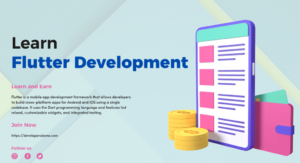Flutter is a popular framework for building mobile applications, and its ability to create multi-page applications is one of its strengths. Multi-page applications in Flutter allow developers to create more complex applications that can handle a range of user interactions and data management scenarios. In this comprehensive guide, we will explore the key concepts behind building multi-page applications in Flutter, including navigation, state management, and best practices for creating scalable and maintainable apps.
Contents
Q1. What is a Multi-Page Application in Flutter?
A multi-page application in Flutter is an application that consists of multiple screens or pages. Each screen or page is typically designed to handle a specific set of interactions or data management scenarios. For example, a multi-page application might have a login page, a settings page, and a dashboard page, each with its own unique set of features and functionality.
Q2. How to Implement Navigation in Multi-Page Applications?
To implement navigation in a multi-page application in Flutter, developers can use the Navigator widget. The Navigator widget allows developers to define a stack of pages that can be navigated using a range of built-in methods, including push, pop, and replace. Here’s an example code snippet that demonstrates how to implement navigation in a multi-page application in Flutter:
void main() {
runApp(MyApp());
}
class MyApp extends StatelessWidget {
@override
Widget build(BuildContext context) {
return MaterialApp(
title: 'My App',
initialRoute: '/',
routes: {
'/': (context) => HomePage(),
'/about': (context) => AboutPage(),
'/contact': (context) => ContactPage(),
},
);
}
}
class HomePage extends StatelessWidget {
@override
Widget build(BuildContext context) {
return Scaffold(
appBar: AppBar(title: Text('Home')),
body: Center(
child: RaisedButton(
child: Text('Go to About'),
onPressed: () {
Navigator.pushNamed(context, '/about');
},
),
),
);
}
}
class AboutPage extends StatelessWidget {
@override
Widget build(BuildContext context) {
return Scaffold(
appBar: AppBar(title: Text('About')),
body: Center(
child: RaisedButton(
child: Text('Go to Contact'),
onPressed: () {
Navigator.pushNamed(context, '/contact');
},
),
),
);
}
}
class ContactPage extends StatelessWidget {
@override
Widget build(BuildContext context) {
return Scaffold(
appBar: AppBar(title: Text('Contact')),
body: Center(
child: Text('This is the contact page.'),
),
);
}
}
In this code snippet, we define three pages: HomePage, AboutPage, and ContactPage, each with its own URL. We then use the Navigator widget to navigate between pages based on the current URL. The initial route is set to ‘/’, which is the home page.
Q3. How to Manage State in Multi Page Applications?
Managing state in a multi-page application can be challenging, as each page may have its own set of state variables and data management scenarios. To manage state effectively, developers can use a range of state management techniques, including inherited widgets, provider, and bloc. Inherited widgets allow developers to pass state down the widget tree, while provider and bloc provide more complex state management solutions.
Q4. What are Some Best Practices for Creating Scalable and Maintainable Multi Page Applications?
To create scalable and maintainable multi-page applications in Flutter, developers can follow a range of best practices, including:
- Separating logic and UI: Separating the application’s logic from the user interface can make it easier to maintain and update the app over time. This can be achieved by using a state management solution like provider or bloc.
- Keeping pages small and focused: Each page in the application should have a clear and specific purpose. Keeping pages small and focused can make it easier to maintain and update the app over time.
- Optimizing performance: Flutter provides a range of performance optimization techniques, including lazy loading and asynchronous rendering. These techniques can help ensure that the app remains fast and responsive, even as it grows in complexity.
- Testing: Testing is an essential part of creating a scalable and maintainable app. Writing tests for each page can help ensure that the app is working as expected and can help prevent bugs from creeping in over time.
Conclusion:
Building multi-page applications in Flutter can be a complex process, but by following best practices for navigation, state management, and app architecture, developers can create scalable and maintainable apps that provide a seamless user experience. By understanding the key concepts behind multi-page applications in Flutter, developers can take advantage of the platform’s powerful features and create robust apps that can handle a range of user interactions and data management scenarios.

